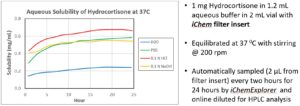The New iChem Filter Insert by Reaction Analytics was developed in collaboration with the Enabling Technologies Consortium. See the great results here. Now the iChem Filter Insert is available to all users looking for effective in-line filtration of samples for analysis.
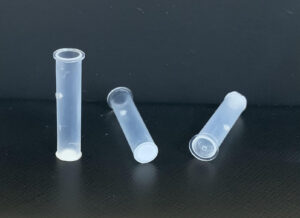
The iChem Filter Insert puts the filter inside a standard sample vial or tube.
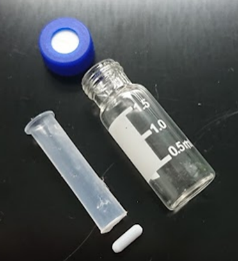
Drop the insert into the vial after the solution has been added and you are ready to start the experimental run.
The solution diffuses across the filter to fill the inside of the tube with filtrate clear of particulates. The sample needle draws from the clear filtrate inside the tube.
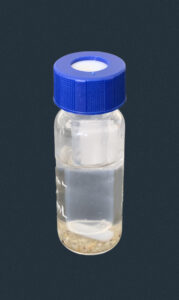
The soluble analytes in the filtrate remain in equilibrium with the solution through diffusion across the filter over the course of the experimental run.
Results have confirmed the ability of the iChem Filter Insert to provide good diffusion for accurate data with effective filtration to protect the analyzer.
Properties
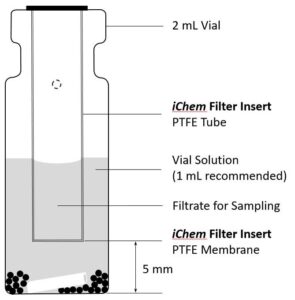

Qualified for Use
- Glass Sample Vial (12 X 32 millimeters) filled with 1 milliliter of solution
- Glass Tube (7 X 30 mm) filled with 250 nanoliters of solution
- Recommend use of a stir bar (e.g. 2×7 mm) to enhance diffusion. Check that stir bar is clear of the filter as it can strike to damage the filter.
- Insert clearance: 5 mm for 2 mL vial and 4 mm for 1 mL vial from filter end to vial bottom. Adjust the autosampler needle height to prevent piercing the filter membrane through sampling.
Functional Tests Passed
- Solvent permeation: Observe filtrate volume instantly
- Solvent compatibility: Stir and heat in various solvents
- Seal integrity: In-vial filter 2-12 µm particle size charcoal
- Solvents tested: DMSO, Methanol, Acetonitrile, THF, Acetone, Ethyl Acetate, Toluene, Heptane, IPA/Water (50/50), and Acetonitrile/Water (10/90)
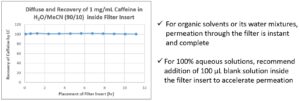
Applications for the iChem Filter Insert
- To filter a saturated solution from solubility and crystallization studies
- To filter a solution with heterogeneous catalyst from reaction screening
- To filter a solution with a solid matrix for a soluble analyte, e.g. analysis of a Drug Product for an Active Pharmaceutical Ingredient with the presence of insoluble excipients
Example Study of Thermodynamic Solubility
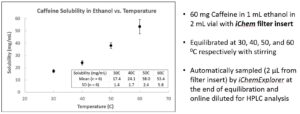
Example Study of Aqueous Solubility at 37C over Time
